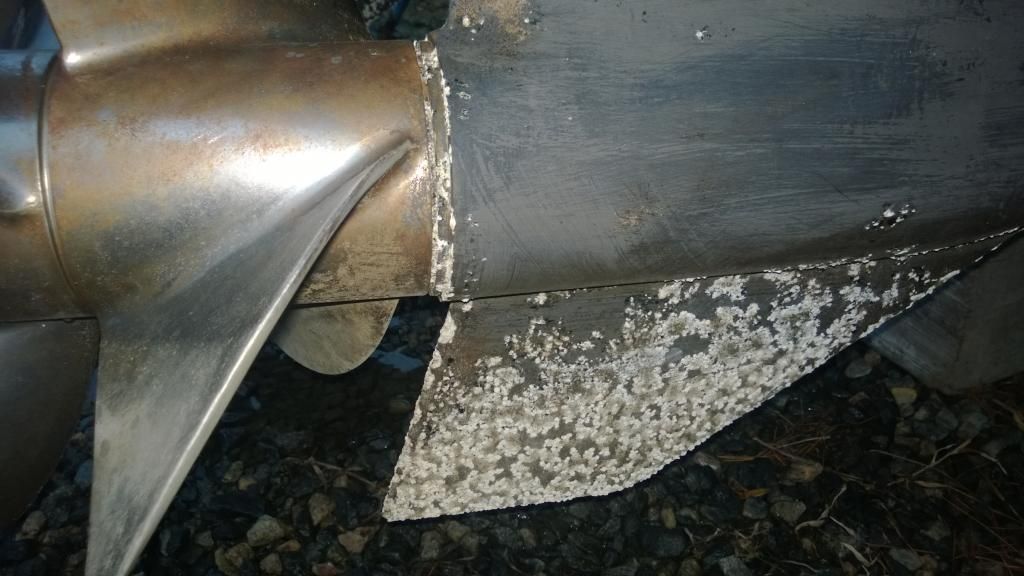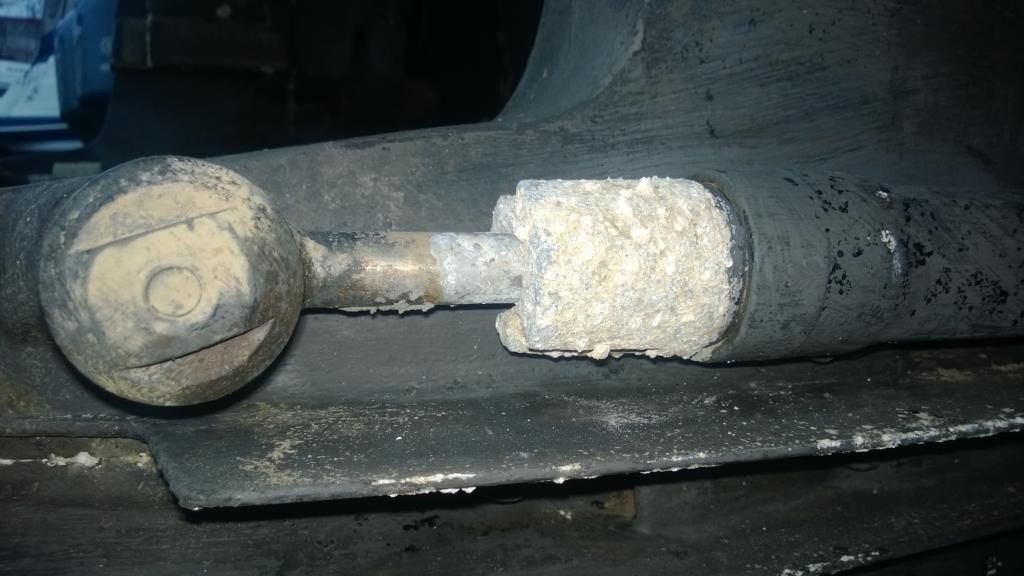src
New Member
- Feb 13, 2012
- 843
- Boat Info
- 2000 310 Sundancer
1997 175BR
- Engines
- 310: Twin 454 Mercruiser w/Bravo III
175: Mercruiser 3.0
I recently pulled my 310 out for the winter, and found that the Bravo 3 outdrives are showing some heavy buildup on the skeg, and light buildup on some other areas. The reason I say "buildup" is that it mostly appears to be buildup on the surface, instead of pitting into the surface. I haven't started trying to clean it up yet, but I wanted to get some opinions from the group.
I had new anodes and anti-foul paint put on at the beginning of the season, but I think they may have used the wrong material. I've heard of Magnesium anodes "overworking" and causing an accumulative affect. I do not know whether they put aluminum or magnesium anodes on (although I specified fresh water use when I had them done). Obviously I'll be careful with what I replace them with next.
It spends 90+% of the time in freshwater - I'm very far up the James River, and we don't really get much/any salinity here. I did take it out to the Chesapeake Bay for a week in July, but that didn't "cause" this that I can tell.
In September I lightly scrubbed the drives down with soft brushes to take off some algae that had been growing, and at the time there was nothing like this on the drive, and the skeg was pretty clean.
I know that I have put the skegs into the mud a few times, so I'm sure I rubbed off the anti-foul and probably scratched the paint, but it seems odd for this to have shown up between early September and mid-November, when it was finally hauled.
One other factor is that before it was hauled, I had it in the shop's marina (not my home marina) for a few weeks. During that time, it was NOT hooked to shore power. Could this be from a current leak in the other marina?


I had new anodes and anti-foul paint put on at the beginning of the season, but I think they may have used the wrong material. I've heard of Magnesium anodes "overworking" and causing an accumulative affect. I do not know whether they put aluminum or magnesium anodes on (although I specified fresh water use when I had them done). Obviously I'll be careful with what I replace them with next.
It spends 90+% of the time in freshwater - I'm very far up the James River, and we don't really get much/any salinity here. I did take it out to the Chesapeake Bay for a week in July, but that didn't "cause" this that I can tell.
In September I lightly scrubbed the drives down with soft brushes to take off some algae that had been growing, and at the time there was nothing like this on the drive, and the skeg was pretty clean.
I know that I have put the skegs into the mud a few times, so I'm sure I rubbed off the anti-foul and probably scratched the paint, but it seems odd for this to have shown up between early September and mid-November, when it was finally hauled.
One other factor is that before it was hauled, I had it in the shop's marina (not my home marina) for a few weeks. During that time, it was NOT hooked to shore power. Could this be from a current leak in the other marina?














